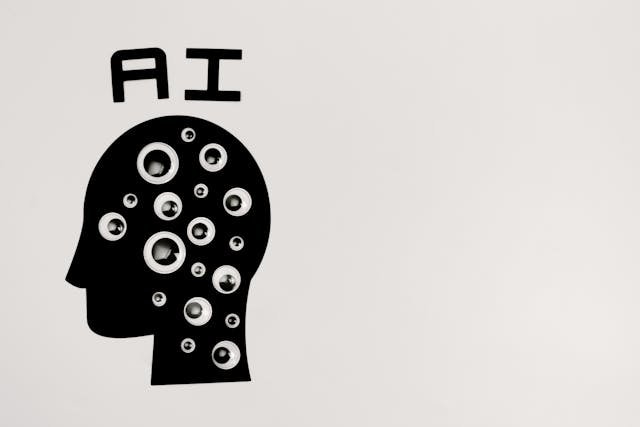When Human Writing Gets Flagged as Artificial: The Reality of AI Detection Tools.

There’s a phrase that keeps me up at night: “We need 100% human-written content. No AI involvement.”
At first, this seemed reasonable. Clients want authentic, original content, and they trust humans to deliver that authenticity. As a writer, I thought this meant job security in an AI-dominated world.
But what do you do when your carefully crafted, entirely human-written work gets flagged as AI-generated by detection software?
Last week, I lived this nightmare.
When My Human Words Were Called “Artificial”
Think about my situation, I spent five exhausting hours editing a single article. Not because it needed improvement, but because an AI detector insisted it had an 8% probability of being AI-generated.
The client’s policy was crystal clear: 0% AI detection, no exceptions.
So I rewrote the flagged sections.
The result?
The AI probability jumped to 68%.
The absurdity hit me hard. Here I was, a human writer, spending my afternoon trying to make my own writing sound “more human” to satisfy an algorithm’s flawed judgment.
The real kicker?
I couldn’t even use AI tools for legitimate purposes like organising research or structuring outlines without risking false accusations.
The Fatal Flaws in AI Detection Technology
Recent research from MIT Sloan confirms what writers worldwide are experiencing: AI detection software is notoriously unreliable, producing high error rates and leading to false accusations.
Here’s the fundamental problem: AI language models were trained on decades of human writing. When detectors flag content as “AI-like,” they’re often identifying patterns that mirror excellent human communication.
Think about that for a moment. AI detectors are penalising human writing for being too clear, too well-structured, and too professional.
Even OpenAI discontinued their own AI detection tool due to poor accuracy. If the creators of ChatGPT can’t reliably detect their own technology, how can third-party tools claim better results?
I’ve noticed that well-organized content with proper headings, bullet points, and logical flow consistently gets flagged. The message seems clear: to pass AI detection, writers must deliberately make their work less polished and less professional.
The paranoia has reached ridiculous heights. I’ve read articles claiming that using em-dashes or maintaining clean structure are now “red flags” for AI writing. We’re being told to avoid the very elements that make content readable and engaging.
The Hidden Cost of No AI Policies
This obsession with 0% AI detection is destroying productivity and creativity.
Time Wastage: Tasks that could take 20 minutes with AI assistance (like keyword research or outline creation) now require hours of manual work.
Quality Degradation: Writers are deliberately breaking grammar rules, dismantling logical structure, and diluting insights—not to improve readability, but to trick detection algorithms.
Mental Exhaustion: The energy spent gaming these systems could be channelled into research, storytelling, and creating genuine value for readers.
Nothing burns out a writer faster than spending hours “fixing” work that was perfectly fine to begin with.
What Clients Really Want (And How to Get It)
I understand the underlying concern. Clients don’t want generic, soulless content mass-produced by AI. They want writing that demonstrates audience understanding, incorporates genuine insights, and maintains an authentic voice.
But here’s what they’re missing: quality content and AI assistance aren’t mutually exclusive.
Some of my best work has involved using AI for research, organisation or structural support while keeping the core insights, experiences, and voice entirely human.
A Better Approach for Everyone
Instead of blanket AI bans or no AI policies, here’s what actually works:
Focus on outcomes, not process. Evaluate content based on whether it resonates with the target audience, offers genuine value, and maintains an authentic and engaging voice.
Use AI as a productivity tool Allow writers to use technology for brainstorming, research organisation, and structural support while maintaining human oversight for strategy, insights, and final execution.
Trust Professional Judgment. Experienced writers understand the distinction between relying on AI as a crutch and utilising it as a valuable tool. Our reputations depend on delivering quality work that serves our clients and their audiences.
Moving Forward
The current AI detection obsession is creating more problems than it solves. Instead of focusing on arbitrary detection scores, let’s evaluate content based on what truly matters: does it engage the audience, provide value, and accomplish the client’s goals?
As writers, we need to advocate for sensible policies that recognize AI as a legitimate tool while maintaining the human creativity, insight, and authentic voice that make content truly valuable.
What’s your experience with 0% AI policies? Have you found yourself fighting detection software instead of focusing on quality? I’d love to hear your thoughts and experiences in the comments below.
This post reflects my personal experience navigating the challenges of AI detection in professional writing. For more insights on content creation and workplace productivity, explore the rest of workwellwpmaniya.com.
